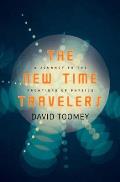
Like stratosphere, troposphere, and mesosphere, atmospheric regions with which it shares part of its name, the
biosphere is a shell-shaped zone enveloping our planet. But where the others are made of nitrogen, oxygen, water vapor, and trace gases, the biosphere is made of life. It extends in two directions — up and down — farther than most of us realize, and farther than scientists, until a few years ago, would have thought possible.
In 1830, British naturalist Edward Forbes claimed that because sunlight could not penetrate deeper than 600 meters, photosynthesis below that depth was impossible. No photosynthesis meant no photosynthetic organisms. No photosynthetic organisms meant no basis for a food chain. Life, Forbes concluded, could not exist in the deep ocean. In subsequent years, however, scientists did find life at greater depths, dining on dead and decaying organisms that sank slowly from the sunlit waters above. Such life still depended on sunlight, albeit indirectly, and most scientists continued to believe that all organisms relied on the Sun's energy. In the late 1970s, though, geologists using the research submarine Alvin discovered anemones and fish thriving in the warm water issuing from a hydrothermal vent 2 kilometers beneath the ocean's surface. The vent did the Sun's work supplying the organisms with warm water. But it did something else as well. It gave the organisms sulfates that provide the basis for a food chain.
Since 1990, scientists have discovered several miniature ecosystems that rely on nonsolar energy: chemosynthesis in some cases and natural radioactive decay in others. And since they don't need light, they can dig in and dig deep. Bacteria have been found in rock samples taken several hundred meters below the seafloor. Exactly how far down might life go? No one really knows. Presumably, organisms would be limited by temperature and pressure, but life is proving more inventive and more resilient than anyone had imagined, and scientists are understandably reluctant to posit a depth below which it is impossible.
What, then, of an upper boundary? Birds and a species of spider have been found near the peak of Mount Everest, nearly 9 kilometers above sea level. Some organisms can get higher than this, and like those beneath the seafloor, they are microbial. It may come as a surprise to many to learn that clouds — forms as unlike subsurface rocks as we might imagine — hold a great deal of life. Bacteria survive in clouds for very long periods, and they can do so because there is water but also because most clouds hold a lot of nitrogen, sulfur, and organic acids — chemicals a bacterium regards as food. In 2006, a cloud sample taken by a French meteorological station was found to be home to 71 strains of bacteria, many individuals of which came from oceans, presumably pushed into the air by a breaking wave or bursting bubble and lofted farther by wind.
And so the known boundaries of the biosphere are several kilometers below sea level and (since bacteria have been found in the mesosphere) as much as 70 kilometers above it, making for a layered skein of life 80 kilometers thick, enveloping our planet. On occasion that skein, or parts of it, may push outward still farther. Perhaps much farther.
Early in the solar system's history, roughly four billion years ago, meteorites impacted Mars as a matter of routine, some striking with such force that they launched rock fragments into orbits that eventually would bring them many places, including Earth. Scientists have discovered at least 28 meteorites that came from Mars. And they may have had passengers — this a hypothesis put forth by David McKay, chief scientist for astrobiology at NASA's Johnson Space Center, regarding one of those meteorites in particular. Although McKay's conclusions remain controversial, no one doubts that organisms have been known to survive dormant in rock for long periods. Since meteorites in the same epoch struck Earth with similar regularity, it is likely that rocks from Earth (and any microbial passengers) made the reverse journey: from Earth to Mars. The two planets then would be evermoving endpoints of a biorealm connected by a million-mile-long elastic thread. But the realm of life might be larger still. Scientists have shown that a meteorite striking the Earth with sufficient force could launch rock fragments (and its passengers) as far as the orbit of Jupiter's moon Europa, where they might have impacted the ice sheets covering that moon and sunk into the dark, salty ocean that scientists believe lies beneath them.
 There is another means by which life might travel through the space between planets and moons: spores. Spores are tiny, lightweight, stripped-down versions of seeds, and they've been known to survive for tens of millions of years. Spores might be carried within rocks launched by meteorite strikes, but they also might employ a gentler means to interplanetary travel — wafted hither and yon by atmospheric inversions, magnetic fields, and solar wind.
There is another means by which life might travel through the space between planets and moons: spores. Spores are tiny, lightweight, stripped-down versions of seeds, and they've been known to survive for tens of millions of years. Spores might be carried within rocks launched by meteorite strikes, but they also might employ a gentler means to interplanetary travel — wafted hither and yon by atmospheric inversions, magnetic fields, and solar wind.
There is a third means of travel between planets: us. Depending on whom you ask, that may not be a good thing. It is interesting that NASA's interest in extraterrestrial biology was originally spurred by concerns for "forward contamination" — the prospect of terrestrial microbes carried by spacecraft infecting and perhaps destroying another form of life. Such concerns have been conscientiously addressed: all spacecraft sent to places that might harbor life have been carefully sterilized. In fact, NASA scientists were worried enough that the Galileo spacecraft might introduce terrestrial microbes to Europa that, when its eight-year reconnaissance of Jupiter and its moons was completed, they steered the spacecraft into Jupiter's atmosphere at a speed of 174,000 kilometers per hour, thus ensuring that it, and any such life it might be carrying, was incinerated.
Might we deliberately extend the biosphere? Certainly. In fact, advocates of terraforming Mars (a centuries-long process to endow it with balmy temperatures and a breathable atmosphere) suggest one way to begin would be to introduce to the planet's surface a hardy species of oxygen-producing microbes. It would be a deliberate, human-engineered expansion of the realm of life. But a less-than-deliberate expansion is likely to occur much sooner. This is because sterilization of ever more complex spacecraft is difficult, while microbes are ingenious and persistent. It is easy to imagine a bacterium or spore hitching a ride on the footpad of an unmanned lander or the sole of an astronaut's boot.
Even if at present, the biosphere's upper boundary is the fringe of the atmosphere, it probably won't stay there. Life in general is resilient, tenacious, and, in its willingness to exploit any and all environments, downright aggressive. Stars like our Sun are congenial to planets and to life; stars like our Sun will exist until the universe is roughly 1014 years of age. That's a 10 followed by 14 zeroes: a lot of time for life — transported by meteors, solar wind, or astronauts — to get around.
÷ ÷ ÷
Further reading
Amato, P., M. Parazols, M. Sancelme, P. Laj, G. Mailhot, and A. M. Delort. "Microorganisms Isolated from the Water Phase of Tropospheric Clouds at the Puy de Dôme: Major Groups and Growth Abilities at Low Temperatures." FEMS Microbiology Ecology 59 (2006): 242–54.
Cano, R. J., and M. Borucki. "Revival and Identification of Spores in 25 to 40 Million Year Old Amber." Science 268 (1995): 1060–64.
Imshenetsky, A. A., S. V. Lysenko, and G. A. Kazakov. "Upper Boundary of the Biosphere." Applied and Environmental Microbiology 35 (1978): 1–5.
Reyes-Ruiz, M., C. E. Chavez, M. S. Hernandez, R. Vazquez, H. Aceves, and P. G. Nuñez. "Dynamics of Escaping Earth Ejecta and Their Collision Probability with Different Solar System Bodies." Submitted to Icarus on August 17, 2011. arXiv:1108.3375v1.
Roussel, Erwan G., Marie-Anne Cambon Bonavita, Joël Querellou, Barry A. Cragg, Gordon Webster, Daniel Prieur, and R. John Parkes. "Extending the Sub-Sea-Floor Biosphere." Science 320 (2008): 1046.